The world of consumer trends is in constant flux, with new technologies, shifting priorities, and evolving behaviors reshaping the landscape at a breakneck pace. As we navigate through 2024, brands that fail to keep their finger on the pulse risk getting lost in the shuffle. To help you stay ahead of the curve, we’ve delved into the latest consumer trends, from the growing influence of AI to the surge in social shopping and the increasing importance of data privacy.
Table of Contents
● Social Media Shakeup
● Search Goes Social
● Navigating Economic Uncertainty
● The Rise of the Conscious Consumer
● Small Businesses Make a Big Splash
● Shifting Behaviors & Buying trends
Social Media Shakeup
The New Frontier of Shopping
Social media platforms have evolved far beyond their origins as mere communication tools. They now serve as vibrant hubs for product discovery and purchase, with 41% of consumers having discovered a product on social media in the past three months alone. This trend is particularly pronounced among younger generations, with Gen Z and Millennials leading the charge.
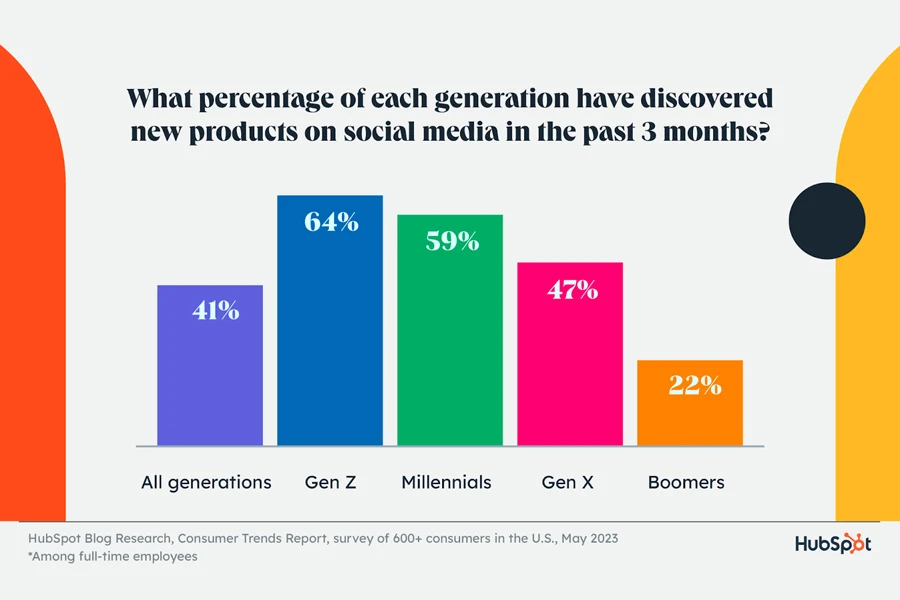
According to Hubspot Blog Research, 25% of social media users have made a purchase directly through a social platform in the recent quarter, with this figure rising to an impressive 43% for both Gen Z and Millennials since January 2024. The influence of social media personalities is also evident, with 21% of users having bought a product based on an influencer’s recommendation during the same period.
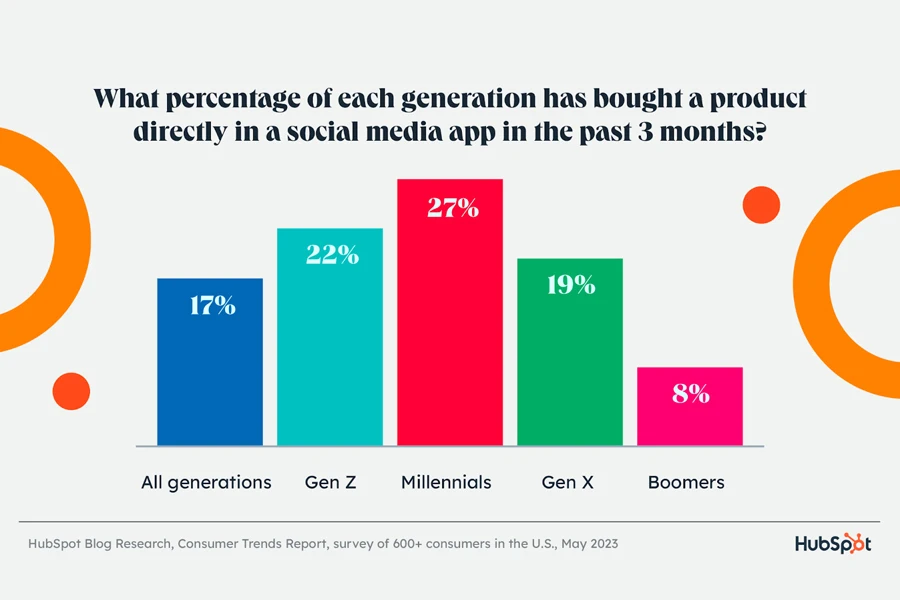
As social shopping gains momentum, brands must adapt their strategies to capitalize on this shift. Investing in targeted social media advertising, cultivating relationships with influencers, and optimizing the social shopping experience will be key to success in this new retail landscape.
New Platforms, Changing Tastes
While Facebook, YouTube, and Instagram remain the most widely used social media platforms, they are experiencing the slowest growth among the platforms included in the survey. Facebook usage remained stagnant year-over-year, while Instagram and YouTube saw declines of 5% and 2%, respectively. In contrast, newer platforms like BeReal (333% growth), Twitch (43% growth), and TikTok (21% growth) are rapidly gaining traction, particularly among younger audiences.
As of 2024, the most popular social media apps are Facebook (71% usage), YouTube (61%), Instagram (42%), TikTok (37%), and X, Snapchat, and Pinterest (all at 23%). While LinkedIn ranks lower on the list, its usage can fluctuate seasonally based on hiring and promotion trends in the workplace.
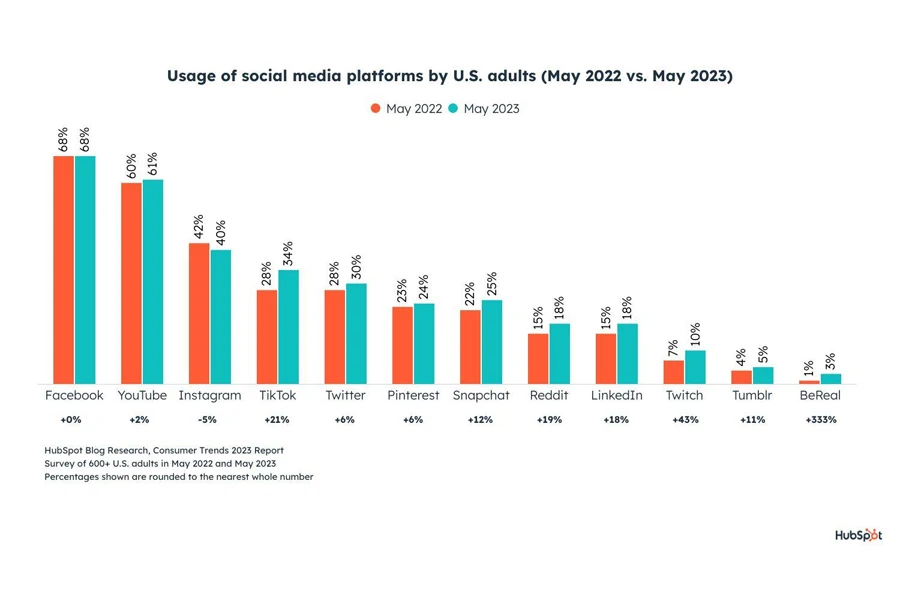
For marketers, these shifts underscore the importance of diversifying social media strategies and staying attuned to the unique characteristics and opportunities presented by emerging platforms. By embracing a multi-platform approach and tailoring content to each platform’s strengths, brands can effectively engage with their target audiences and stay relevant in an ever-evolving social media landscape.
Search Goes Social
The rise of social media has not only impacted shopping habits but also the way people search for information online. According to the Hubspot customer trends report, 32% of consumers now turn to social media for search, with nearly one-third of those aged 18-54 preferring social search over traditional search engines.
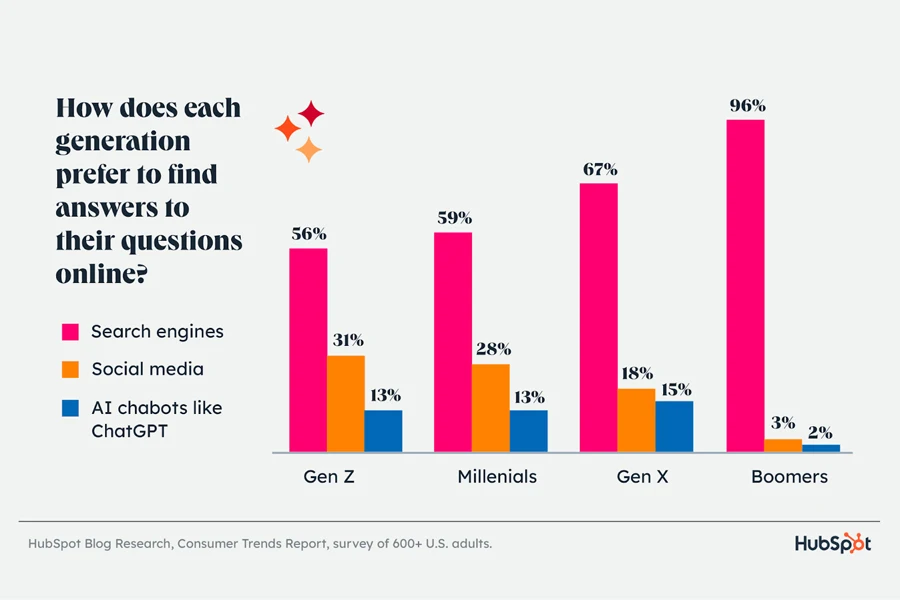
This shift is driven by several factors, including the desire for more personalized and visually engaging search results, as well as the growing influence of user-generated content and peer recommendations. However, despite the increasing popularity of social search, search engines are still considered the most effective way to find information, with 68% of consumers rating them as such.
To capitalize on these evolving search behaviors, brands must adopt a holistic approach to search engine optimization (SEO) that encompasses both traditional search engines and social media platforms. This means creating content that is not only keyword-rich but also visually compelling, shareable, and tailored to the unique features and algorithms of each platform. By doing so, brands can improve their visibility, reach, and engagement across multiple touchpoints, ultimately driving more traffic and conversions.
Navigating Economic Uncertainty
As the global economy continues to face challenges, consumer sentiment and behavior are inevitably affected. 57% of consumers surveyed believe that the U.S. is currently in a recession, with 55% tightening their budgets in response and 47% actively preparing for a potential economic downturn.
Job security concerns are also on the rise, with 50% of respondents worrying about their employment prospects. Interestingly, the growing use of AI in the workplace may be contributing to these anxieties, as some workers fear that automation could lead to job displacement.
To weather these uncertain times, brands must focus on delivering value to their customers and demonstrating empathy and understanding for their financial concerns. This may involve offering more affordable product options, implementing flexible payment plans, or providing additional support and resources to help customers navigate economic challenges.
The Rise of the Conscious Consumer
In today’s socially conscious climate, consumers increasingly expect brands to take a stand on important issues. The report reveals that 62% of consumers believe companies should publicly address social and political matters, with 29% more likely to purchase from brands that align with their values.
Interestingly, the top issues consumers want brands to address vary by generation. Gen Z prioritizes affordable healthcare, racial justice and climate change.
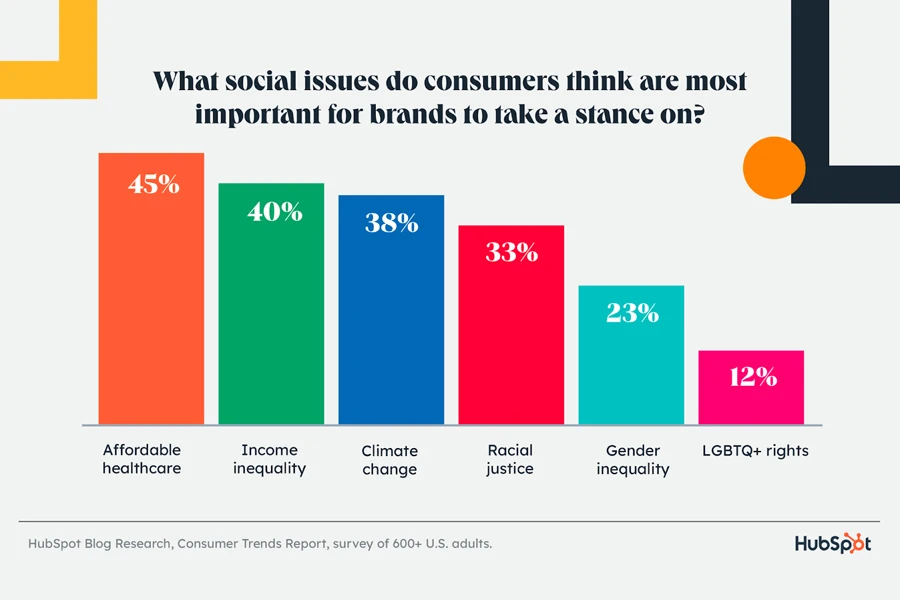
To navigate this complex landscape, brands must carefully consider which issues resonate with their target audience and authentically integrate social advocacy into their overall mission and strategy. This may involve partnering with relevant organizations, supporting community initiatives, or using their platform to raise awareness and drive positive change.
However, it’s crucial for brands to approach social advocacy with sincerity and consistency. Consumers can quickly spot inauthentic or opportunistic attempts to capitalize on social movements, which can backfire and damage brand reputation. By genuinely engaging with the issues that matter to their customers and backing up their words with meaningful actions, brands can foster deeper connections, inspire loyalty, and contribute to a better world.
Small Businesses Make a Big Splash
Amidst the challenges posed by economic uncertainty and the dominance of large corporations, consumers are increasingly rallying behind small businesses. As reported by HubSpot, 52% of consumers say that a product being made by a small business makes them more likely to make a purchase, representing an 18% increase from the previous year. Additionally, 46% of respondents have actively chosen to buy a product specifically because it was made by a small business, also up 18% from last year.
This growing support for small businesses reflects a broader shift in consumer values and priorities. Many consumers appreciate the unique products, personalized service, and community ties that small businesses offer, and view their purchases as a way to support local economies and foster entrepreneurship.
Shifting Behaviors & Buying trends
Despite the rapid advancement of AI and automation, consumers still value human interaction when it comes to customer service. 56% of consumers prefer to speak with a human customer service representative, while only 11% prefer AI-powered chatbots. This preference is even more pronounced among older generations, with 65% of Baby Boomers favoring human support.
In terms of search behavior, the report highlights the growing importance of mobile-first strategies and the rise of “creators” as influential sources of information and inspiration. A staggering 91% of consumers have bought a product after seeing a relevant search result on their mobile device, underscoring the need for brands to optimize their content for mobile discovery and conversion. Additionally, 59% of consumers have purchased a product recommended or promoted by a creator, demonstrating the power of influencer marketing in driving sales.

When it comes to social media shopping, Facebook emerges as the most trusted platform, with 33% of consumers expressing confidence in making purchases through the site. Instagram follows closely behind at 31%, while TikTok ranks third at 22%. As social commerce continues to gain traction, brands must focus on building trust and credibility on these platforms by providing accurate product information, transparent pricing, and responsive customer support.
Consumers’ high expectations for product accuracy and authenticity should be prioritized. A full 83% of respondents expect products to match their descriptions or depictions online, while 75% say that misleading product information would negatively impact their perception of a brand. To meet these expectations, brands must be more careful to offer clear and detailed product descriptions, rather than fantasizing about their products. Or else, these younger shoppers are more likely to demand a refund.
Conclusion
The latest consumer trends and insights reveal a dynamic and rapidly evolving landscape, shaped by technological advancements, economic uncertainties, and shifting social values. To thrive in this environment, brands must adopt a multi-platform approach, prioritize authentic engagement, and demonstrate transparency, empathy, and a genuine commitment to their customers’ well-being. By staying agile, attuned to evolving consumer needs, and aligning with their values, businesses can foster deeper connections with their audiences and secure their place in the hearts and minds of consumers for years to come.




